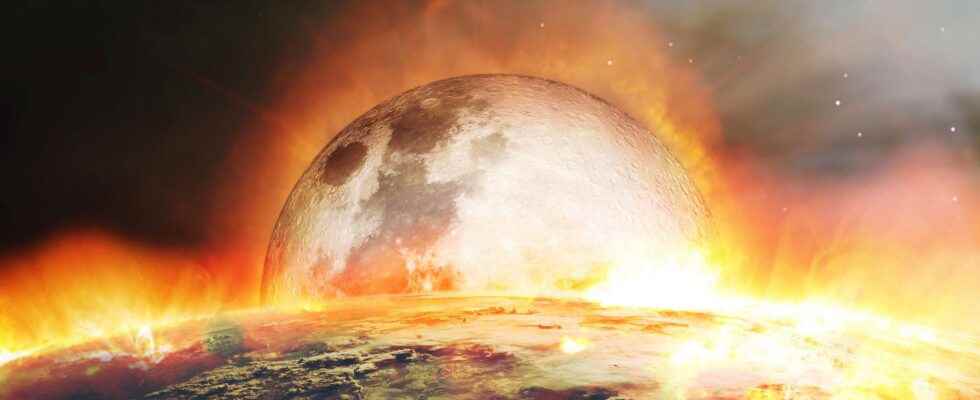While the movie moonfall released in theaters on February 9, Futura invites you to discover what would happen if the Moon were to leave its orbit to crash into the Earth. What would be the consequences for living species and what would be the impact on the planet?
You will also be interested
[EN VIDÉO] Interview: is science fiction really scientific? Sometimes it’s hard to know if science fiction is inspired by scientists or if it’s the other way around. From its creation until our time, this genre amazes, certainly because it is based on scientific rationalism. On the occasion of the 70th anniversary of the CEA (Commission for Atomic Energy and Alternative Energies), Futura-Sciences interviewed Roland Lehoucq, a physicist with a passion for science fiction.
What would happen if the sky, or more specifically the Moon, fell on our heads? It’s the postulate base of the new feature film by Roland Eimmerich, pope of disaster and big budget nanars (The day after, 2012, independence day…). In moonfall, the Moon falls out of its orbit to rush towards the Earth. If in reality, such a scenario is impossiblethe consequences of such an event would be cataclysmic and would lead to the destruction of part of the planet as well as the eradication of all forms of life on its surface.
Destructive Chain
Located 384,000 kilometers from Earth, the moon does not pose a threat to Earth. Unlike the synopsis of moonfallour natural satellite is even moving away, at a speed almost four centimeters per year. Currently, its gravitational influence impacts the tides and sea and ocean levels. But as the Moon would approach the Earth, this influence would cause violent phenomena. Gigantic tsunamis, several tens or hundreds of meters high, could sweep the coastlines of the globe. Cities like Venice, New York or Hong Kong would be wiped off the surface of the planet by rising sea levels. The progressive approach of the Moon would also disturb the Earth’s crust. Theoretically, volcanoes would erupt, while earthquakes traveled through several regions of the world. In addition, water points could start boiling.
Cross-section of a 3D simulation reproducing a scenario for the impact that formed the Moon, showing a roughly Martian-mass impactor brushing past an Earth-like target at a 45-degree angle. © Jacob Kegerreis, Durham University
If it is unlikely thatany species survived as the Moon approaches, the potential survivors would witness the fragmentation and then the bursting of the Moon. The latter, arriving at the edge of the Earth, at a distance of 18,459 kilometers called the “limit of Roche”, would fall apart. For a time, the Moon pieces would orbit the planet. However, they would not form rings like those of Saturn, but would quickly begin falling to Earth, completing the planet’s brutal devastation. The fall of blocks of different sizes would be the vector of an intense warming of theatmosphere while the bombardment would leave a lasting mark on the ground. For comparison, theasteroid having dug the Chicxulub crater in Mexico and accelerated theextinction from dinosaurs 66 million years ago had an estimated diameter between 10.6 and 80 kilometers.
A gradual estrangement
Ultimately, an asteroid would have a better chance of crashing into the Earth than the Moon changing its orbit to crash into a continent. the natural satellite will continue to recede at the rate of about 3.80 centimeters per year. The gravity terrestrial influences the orbit of the Moon, moving it slightly further away from the planet each day. But no noticeable impact will disrupt the lives of the inhabitants of the Earth, except for an almost imperceptible increase in the length of Earth days. The maximum orbit of the Moon would be reached after 50 billion years: its gravitation would stabilize around the Earth.
But one catastrophic scenario sometimes leads to others. In 5 or 6 billion years, the Sun will begin its transformation into red giant. Its atmosphere will then extend from one astronomical unit, or 150 million kilometres. Theoretically, the inner planets of the Solar System, Mercury to Earth, would be devoured by thestar growing: the Moon would then never know its maximum distance from the Earth.
The film moonfall hits theaters on February 9, 2022, while the scenario of the Earth being destroyed by the Moon has been explored by the channel Youtube what if in 2018.
Interested in what you just read?
